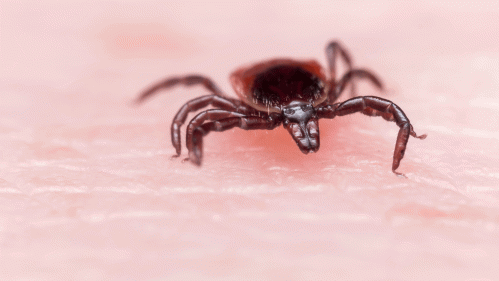Early Lyme Disease May Include Neurologic Lyme Disease

Rutgers issues recommendations for detection of neurologic Lyme disease by rheumatologists
Rheumatologists can play a major role in diagnosing and treating neurologic Lyme disease, according to a paper published in the journal Pathogens by an immunologist and rheumatologists at Rutgers New Jersey Medical School.
May is Lyme Disease Awareness Month. The Centers for Disease Control and Prevention estimate that each year about 476,000 people in the United States may contract Lyme disease, which is caused by the bacterium Borrelia burgdorferi and rarely Borrelia mayonii and is transmitted to humans through the bite of infected blacklegged (deer) ticks. Most infections occur in the Northeast and mid-Atlantic, Wisconsin and Minnesota and on the West Coast, particularly northern California.
Although most early cases of Lyme disease can be treated successfully with a few weeks of antibiotics, later stages may have debilitating problems.
“Lyme disease has a broad spectrum of symptoms and signs and can be difficult to diagnose especially if a tell-tale skin lesion is not seen,” said Steven Schutzer, a professor at Rutgers New Jersey Medical School who specializes in Lyme disease research and is an author of the paper. “It can be especially serious if the bacteria affect the nervous system.”
Schutzer and co-author Swati Govil, a rheumatology fellow at Rutgers New Jersey Medical School, alert rheumatologists, primary care physicians and patients on the signs of neurologic Lyme disease:
What are the most common symptoms of Lyme disease?
Schutzer: About four to 14 days after a tick bite, people may see a circular red skin lesion that forms a bull’s-eye pattern. However, more often than not the way the skin lesion looks is varied or might even be nonexistent. In fact, the classic bull’s eye appearance occurs more frequently in southern tick-associated rash illness than in Lyme disease. The rash is usually painless and does not itch and thus often goes unnoticed. By the time the patient comes to the attention of a rheumatologist the lesion is usually long gone.
After a skin rash, neurologic signs and joint pains are most common. Days to months after a tick bite, people could experience symptoms such as weakness or paralysis on one or both sides of the face, sensory loss, cognitive issues, fatigue, spine pain, numbness or a “pins-and-needles” feeling in their arms or legs, neck stiffness and severe headaches. When joint pain — known as “arthralgias” — particularly in the knees and other large joints occur along with the symptoms that compelled a person to visit the rheumatologist it raises the possibility of neurologic Lyme disease, which, when treated early, has a favorable prognosis.
Why are rheumatologists specifically on the front line of diagnosing neurologic Lyme disease
Govil: People with possible Lyme disease may go to rheumatologists most commonly for joint pain, especially in the knee. Rheumatologists see a lot of patients with Lyme disease, but we are noticing that a majority of the complaints now are actually neurologic. We want to alert rheumatologists to be vigilant for signs of Lyme disease when they see patients with joint pain.
Lyme disease with true arthritis occurs far less than cases with joint pain and neurologic symptoms. Since it can be difficult to diagnose neurologic Lyme disease, the rheumatologist should ask about the patient’s history of Lyme disease and if family members have similar symptoms. If so, the rheumatologist should promptly refer them to a neurologist or an infectious disease physician who has experience with neurologic Lyme disease.
Schutzer: People should see a rheumatologist if their large joint pain occurs outside of an activity, such as a sports injury, that would otherwise cause these symptoms. Patients should ask the doctor about the possibility of Lyme disease, especially if they had a tick bite, a rash or if they have symptoms or signs that suggest their nervous system is involved. If so, that can be very serious.
What message do you have for primary care physicians?
Schutzer: If people get a tick bite or have been in an endemic area and feel sick, they should visit their primary care physician. However, doctors should not assume that the patient does not have Lyme disease if they do not see a bull’s-eye skin lesion. They should take a history from the patient. If several weeks have passed since the exposure, they can order blood tests to detect antibodies. If Lyme disease is detected, they should start the patient on a course of antibiotic treatment. In most cases, recovery will be likely the sooner treatment begins. When it is delayed, the patient is at risk for progressing to later, more severe symptoms.
Other authors of the paper from Rutgers New Jersey Medical School include Eugenio Capitle and Reena Khianey.


